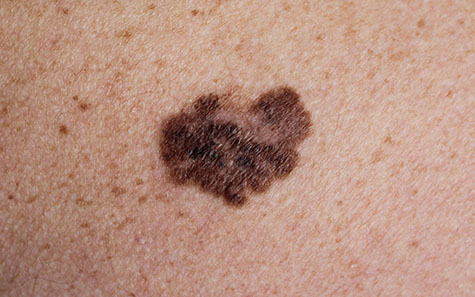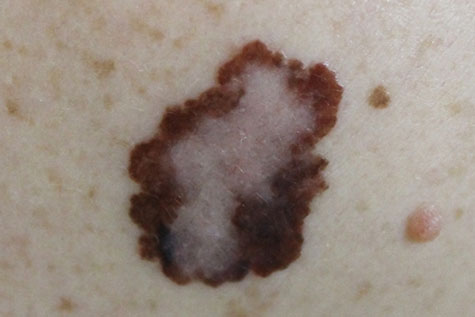What Causes Melanoma?
Melanoma is caused by damage to the skin cells from ultraviolet (UV) light. Your skin can be exposed to UV light from both sunlight and indoor tanning equipment such as tanning beds. Over time, excess exposure can cause damage to the melanocytes, or pigment-producing cells, resulting in melanoma.
Who Gets Melanoma?

Anyone can get melanoma, but melanoma is more prevalent in those who:
- Have fair skin
- Spend a lot of time outdoors
- Tan frequently or use indoor tanning equipment
- Have a history of sunburns
- Have a family history of melanoma (genetic predisposition)
Melanoma can occur almost anywhere on the body including the eyes, groin, and nails. For this reason, you should remember to check areas like your feet and toes when performing self-skin checks.
How Can I Prevent Melanoma?
Protecting your skin from excess sun exposure is the most important way to prevent melanoma or other types of skin cancer. You should always:
- Wear sunscreen that is SPF 30 or higher daily
- Reapply sunscreen regularly when outdoors
- Wear sun-protective clothing, including sunglasses and wide-brimmed hats
- Seek shade and avoid tanning, including indoor tanning equipment
In addition to these precautions, you should perform regular self-exams to check for signs of skin cancer. In particular, screen for concerning moles by following the ABCDE guide for melanoma
- Asymmetry
- Irregular or poorly defined Borders
- Uneven Color
- Growing Diameter
- Evolution in shape, size, or color
Why Treat Melanoma?
Melanoma is considered the most serious type of skin cancer because, if left untreated, it can spread to other types of tissue and cause further health concerns. However, if caught early, melanoma can be easily removed and treated through a simple procedure by your dermatologist. Melanoma is especially treatable when it is diagnosed early.

How Can I Treat Melanoma?

First, your dermatologist will diagnose melanoma by closely examining the area of concern and performing a skin biopsy. Once a diagnosis has been made, your dermatologist will then determine the stage of the melanoma so the correct treatment plan can be established.
Some common treatment options for early-stage melanoma include:
- Excision
- Mohs surgery
If melanoma has developed further, your dermatologist may suggest:
- Lymphadenectomy (removal of lymph nodes)
- Immunotherapy or targeted therapy medication
- Chemotherapy
- Radiation therapy
Schedule an Appointment
If you notice a suspicious mole or spot, do not hesitate to schedule an appointment with a dermatologist. At Arlington Dermatology, our experienced, board-certified dermatologists are ready to make an accurate diagnosis and put your mind at ease while restoring your health with effective treatment options.
To schedule an appointment at Arlington Dermatology, please call our office or contact us online.



